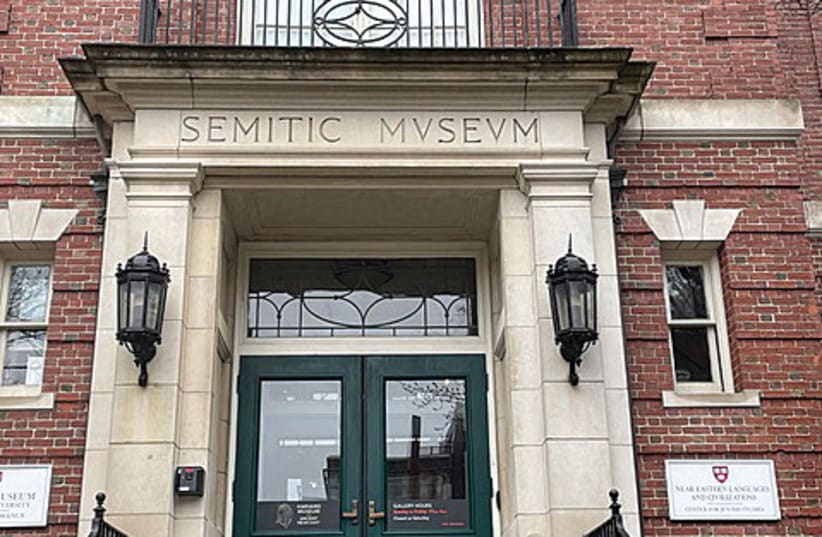Amid roiling protests on US college campuses over the Israel-Hamas conflict, Harvard Yard (normally open to the public) has been closed to outsiders “until further notice,” according to the Harvard Crimson.
The Yard, as of this writing, has been home to a pro-Palestine encampment since April 24, with more than 30 tents in front of University Hall and the 1884 statute of John Harvard, which has been draped with a Palestinian flag and keffiyeh at various times.
(The statue, by the way, is known as the “statue of three lies”: 1. It doesn’t depict John Harvard, because he died in 1638 and no one in 1884 knew what he looked like. 2. It calls him the founder of Harvard University and he wasn’t. 3. The university wasn’t founded in 1636, as stated on the statue’s base).
Harvard University has been fighting the encampment with middle-of-the-night sprinklers (which students cover with overturned buckets) and with threats to take disciplinary action against students for violating school rules against erecting tents or tables in the Yard.
Protesters have also been projecting slogans onto University Hall: “Free Gaza,” “Divest Harvard,” and “Gaza 4 eva.”Nearby, in front of the Science Center, an installation known as the “Wall of Resistance” marked “Palestine Solidarity Month” in April.


Several Jewish students have filed a lawsuit against Harvard, accusing it of becoming “a bastion of rampant anti-Jewish hatred and harassment.” About 10% of Harvard students are Jewish, down from about 20% a generation ago.
On a recent Friday night, no one showed up for the Conservative prayer service at the Harvard Hillel, though the building was redolent with cholent simmering in a crock pot. About 20 people attended Shabbat services at Harvard’s Chabad House, and around 100 people came for Shabbat dinner, including a physicist from Israel’s Weizmann Institute of Science and Harvard University student Adam Pearl, son of murdered Jewish journalist Daniel Pearl.
The connection of Jews to Boston
THE BOSTON-Cambridge area has a relatively thin Jewish history. A few Sephardic Jews passed through during the Colonial period, but by the Civil War, the Jewish population of Boston only numbered about 1,000. Only in the late 1800s, in response to pogroms in Eastern Europe, did a significant number of Jewish immigrants arrive from the Pale of Settlement in Russia and Eastern Europe.
The Vilna Shul, built in 1919, is located on Beacon Hill’s less fancy North Slope and now serves as a center for Jewish culture, including a recent workshop with Israel’s Vertigo Dance Company. One Sunday each month, the shul offers two-hour Jewish history walking tours and tours of the building itself.
Boston is also home to the New England Holocaust Memorial and is hosting a traveling Auschwitz exhibition through early September.
Boston’s Museum of Fine Arts has a new Judaica Gallery with a small but interesting exhibit entitled Intentional Beauty, Jewish Ritual Art from the Collection. The MFA is one of only four general art museums (as opposed to Jewish museums) in the US that has a Judaica gallery.
One timely item on display is a Haggadah published in India in 1874, showing women in saris baking matza. It’s written in Hebrew with translations into Marathi.
In the Judaica Gallery, you can also pick up a guide to Judaica exhibited elsewhere in the museum, which makes for a fun treasure hunt (though I never did spot the Roman tetradrachm with a Tabernacle screen supposedly on display in Gallery 212C).
Across the Charles River in Cambridge, Harvard has four museums of its own, including the Museum of the Ancient Near East – also known as the Harvard Semitic Museum – with more than 40,000 artifacts, many collected by Harvard-sponsored expeditions.
Inside the entrance is a full-scale reconstruction of an Iron Age house in what’s now Israel. There’s an online tour for those who can’t visit in person.
The museum also sells a useful (and cheap!) souvenir: a tote bag with “Harvard” written in Proto-Sinaitic, Hebrew, Arabic, and English.
Most Boston tourist attractions (such as the Freedom Trail, the Boston Public Garden, and Faneuil Hall Marketplace) are in downtown Boston and don’t offer many kosher options. (More kosher restaurants are in the Brookline suburb). However, the kosher Milk Street Café (which, ironically, serves meat) is open from 7 a.m. to 3 p.m., Monday through Friday.
